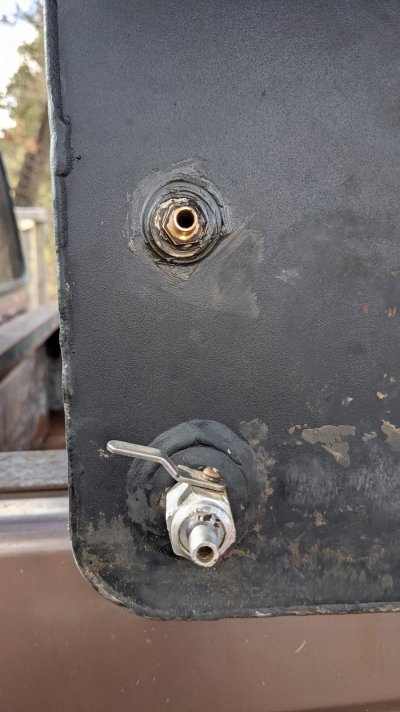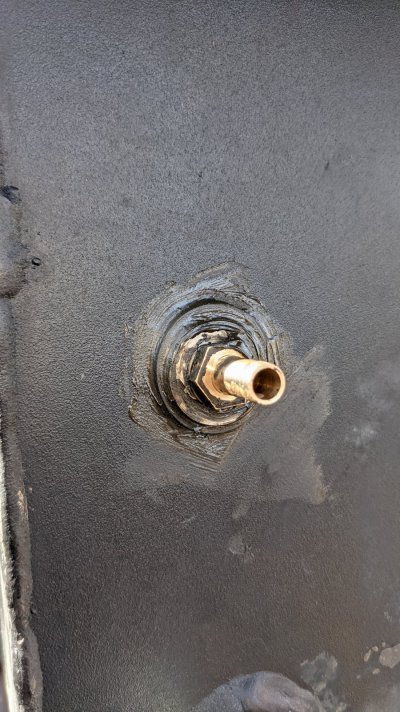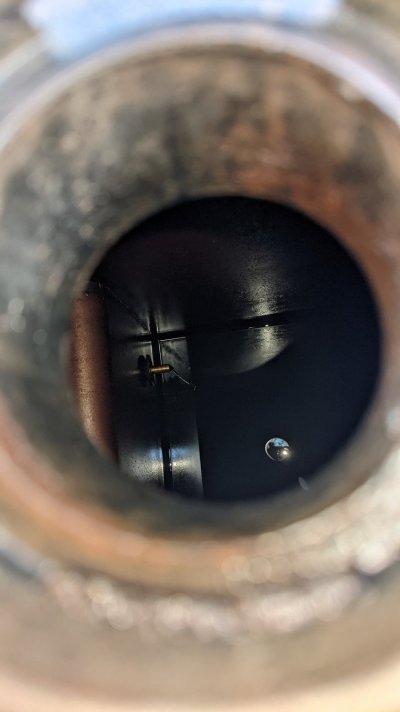Big Bart
Tow&Slow
I have seen a trick. Drill the hole, use a long piece of stiff tie wire. Put it in the hole you drilled and up through the fill tube/hole. Put your nut on the wire, then a rubber washer, and a bolt or stick to make it so the nut and washer can’t come off. Slide the hose adapter on the opposite side outside the tank. Pull the wire from the outside where you drilled the hole. So the nut pulls inside and up to the hole. Then slide the adapter into the hole and pull the wire. Turn the hose adapter till it threads. The only challenge is you cannot do much about the nut twisting. However many times as you know if you pull out the bolt and turn the nut will grab the other side and you can tighten it. I said add a rubber washer so the nut catches and drags and thus is more likely to tighten. You may want a rubber washer outside to seal.
If not, you can tig weld a female pipe fitting over the hole and go buy a fitting that is male pipe to male hose at Home Depot or Ace. Then screw it in to the pipe you welded on with diesel rated pipe dope or teflon tape.
If not, you can tig weld a female pipe fitting over the hole and go buy a fitting that is male pipe to male hose at Home Depot or Ace. Then screw it in to the pipe you welded on with diesel rated pipe dope or teflon tape.
Last edited:





